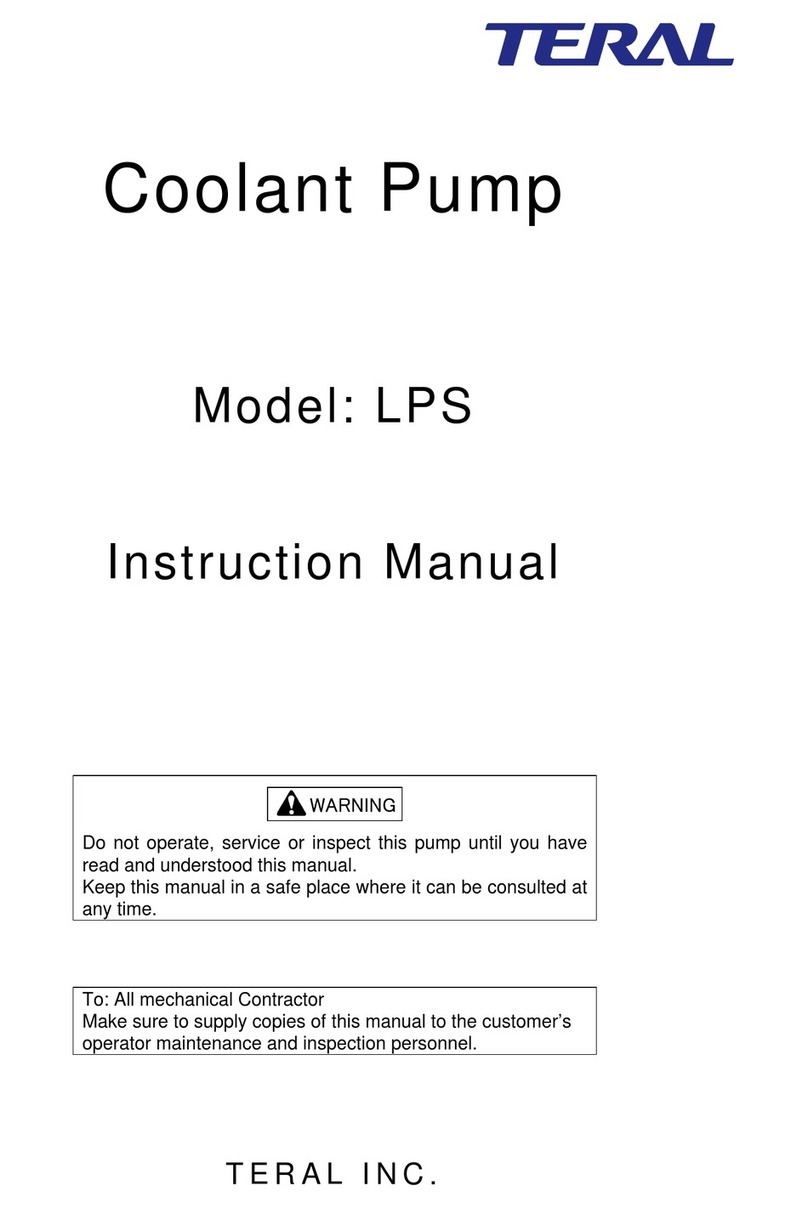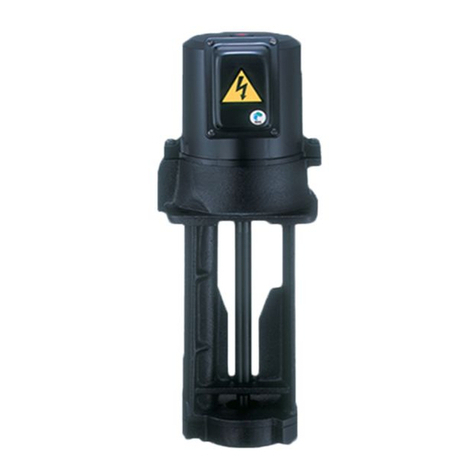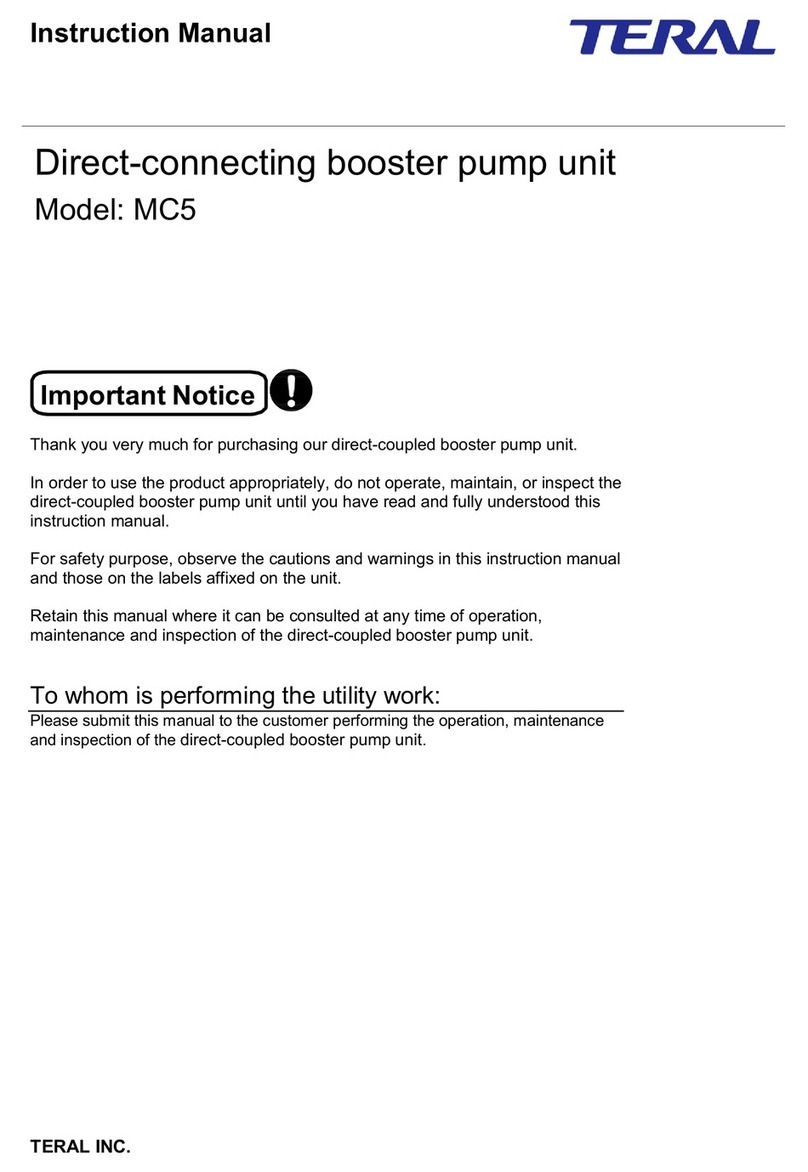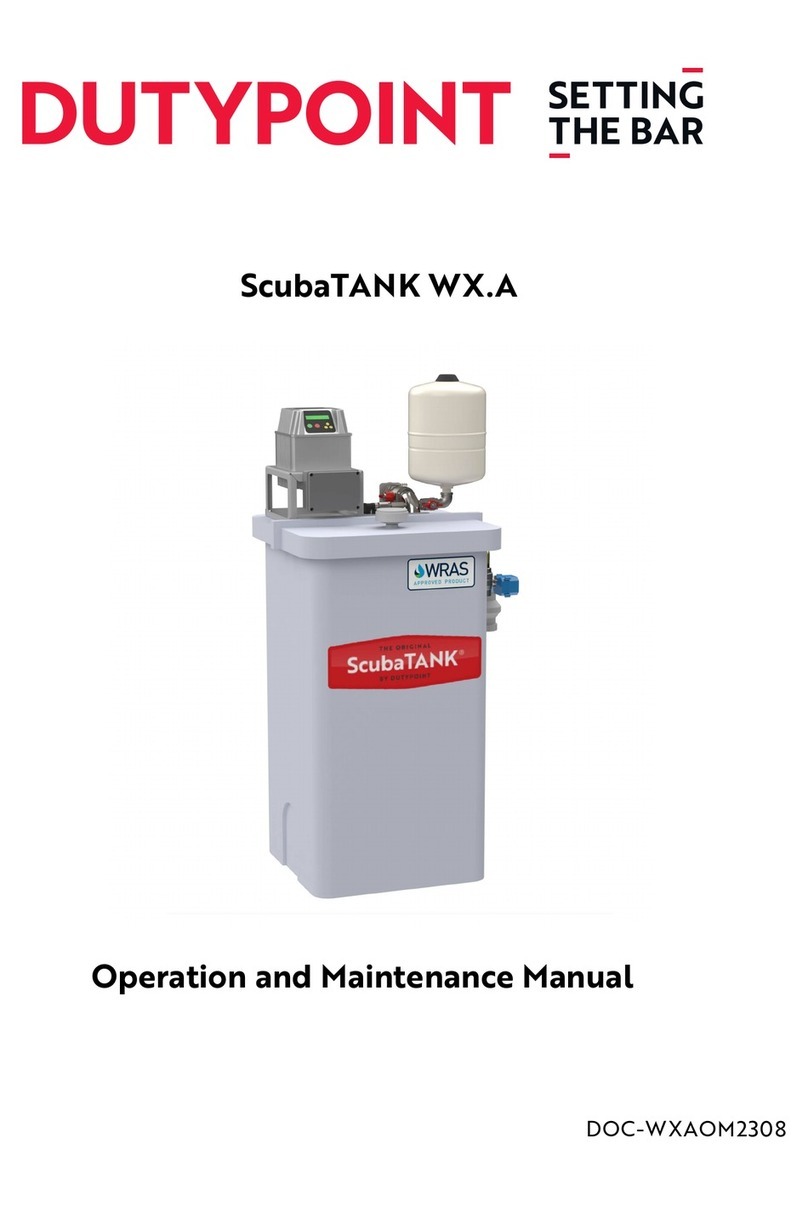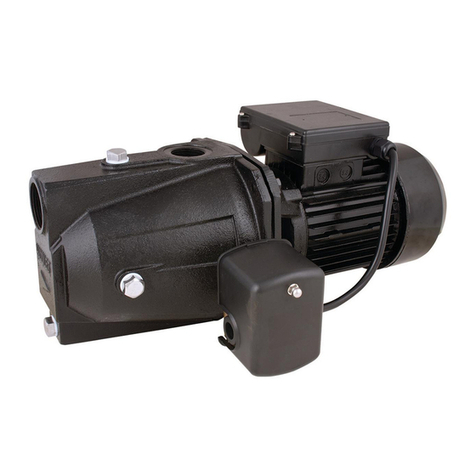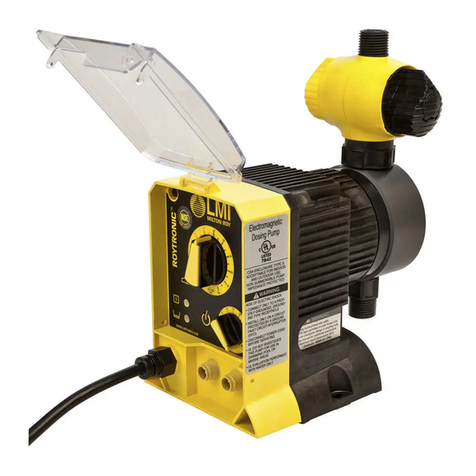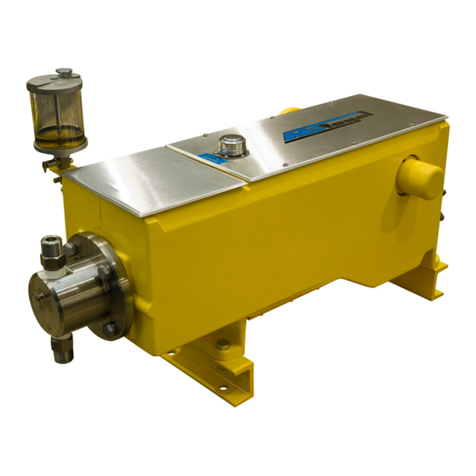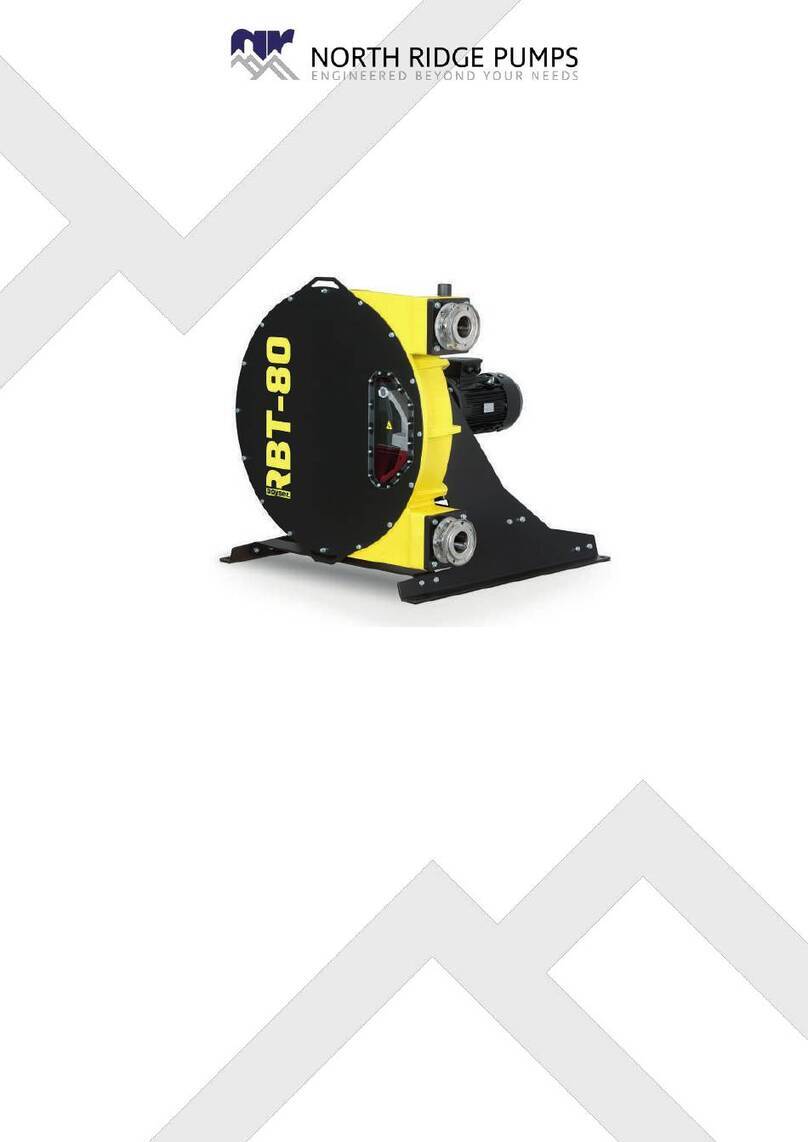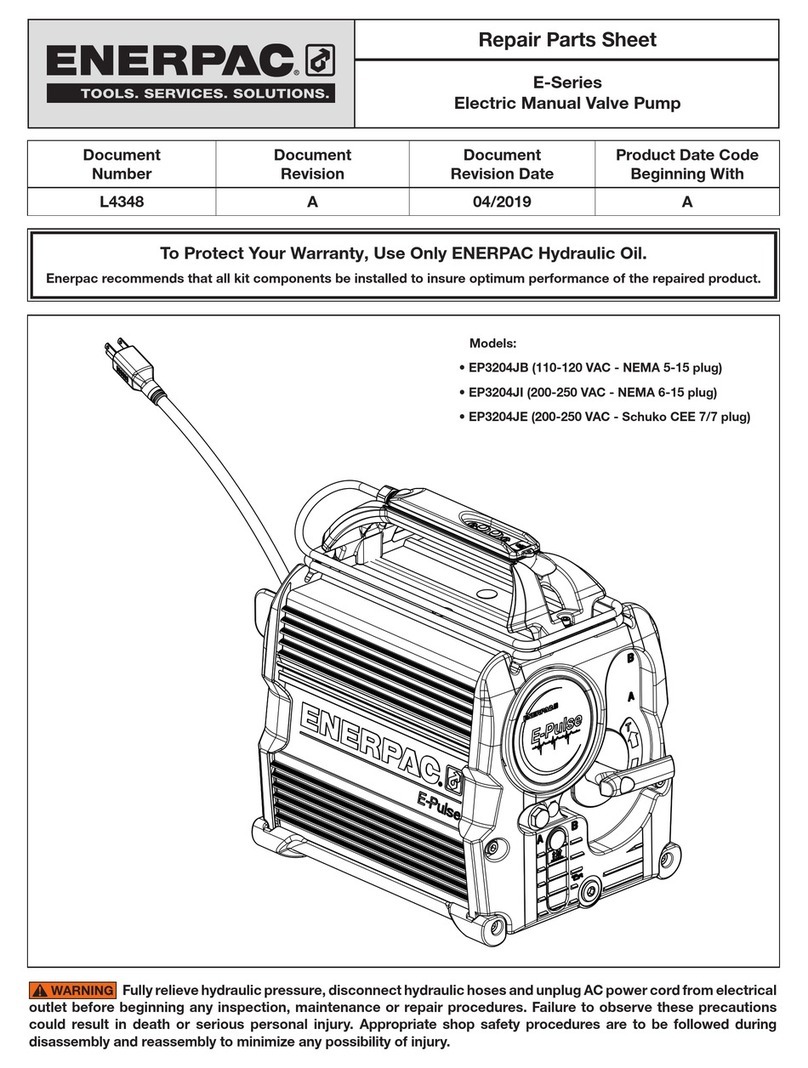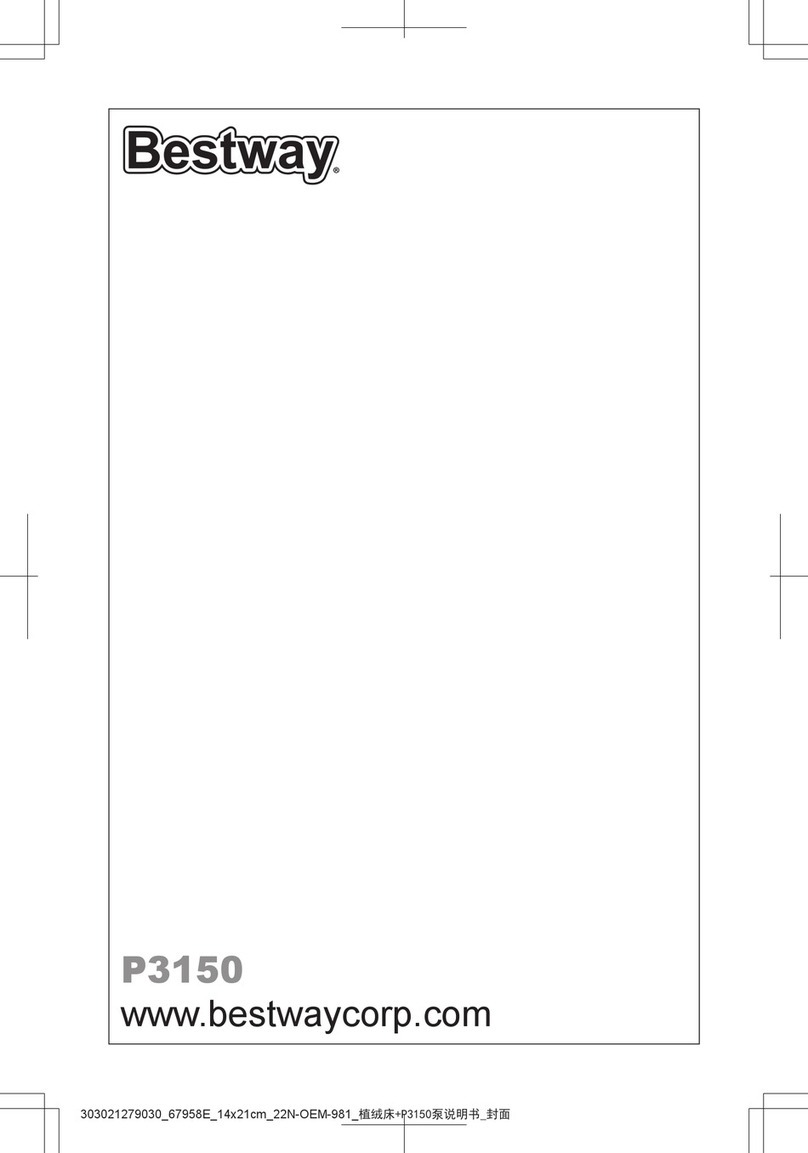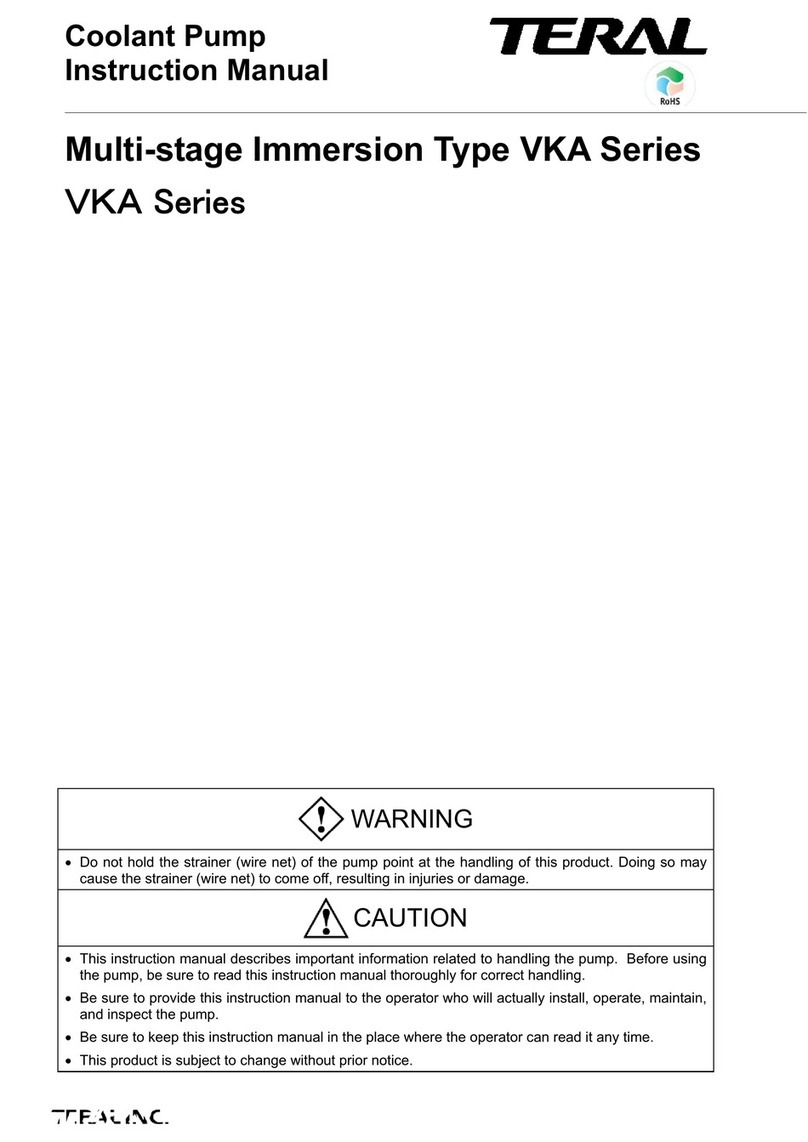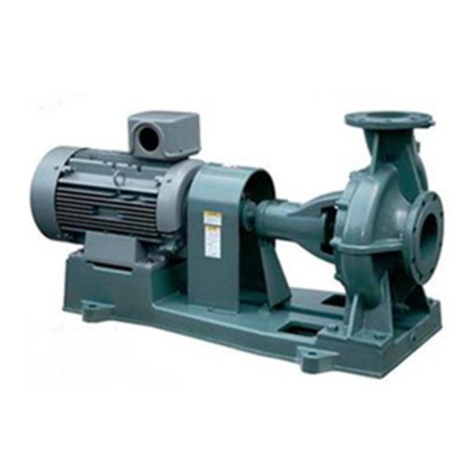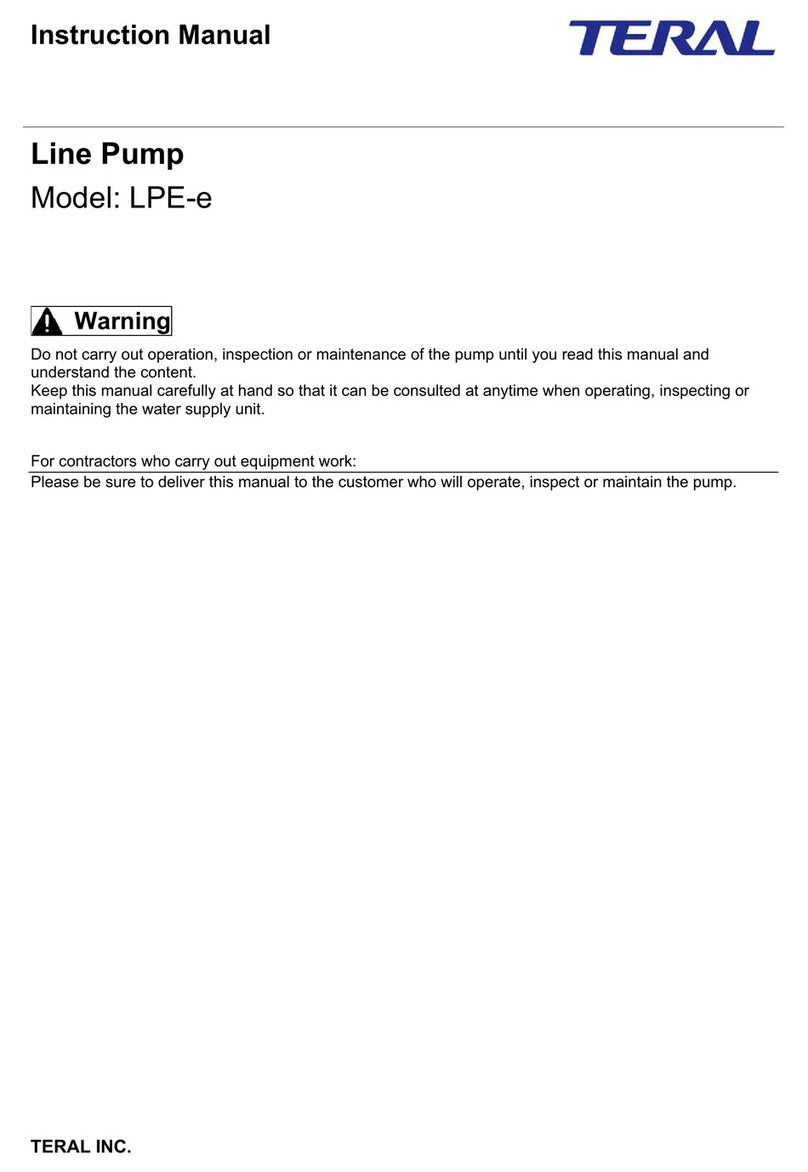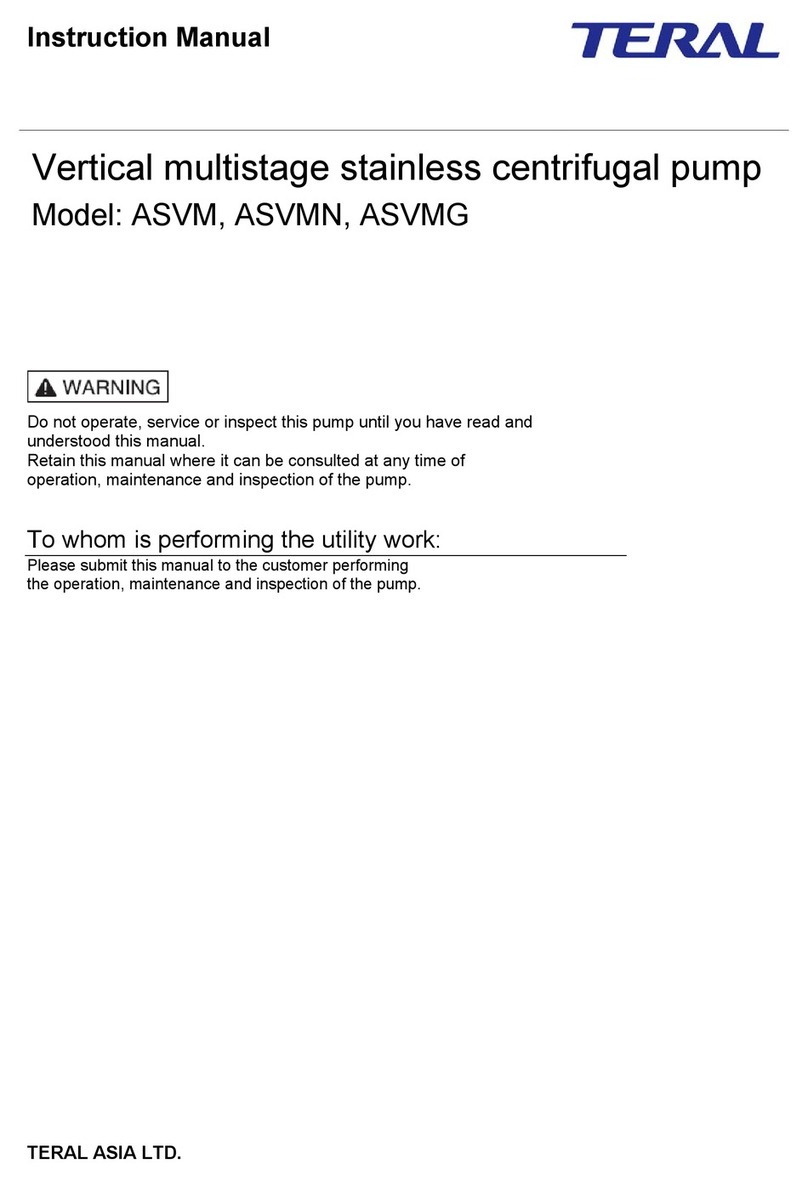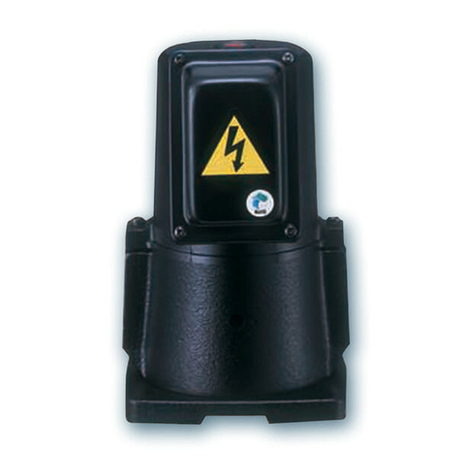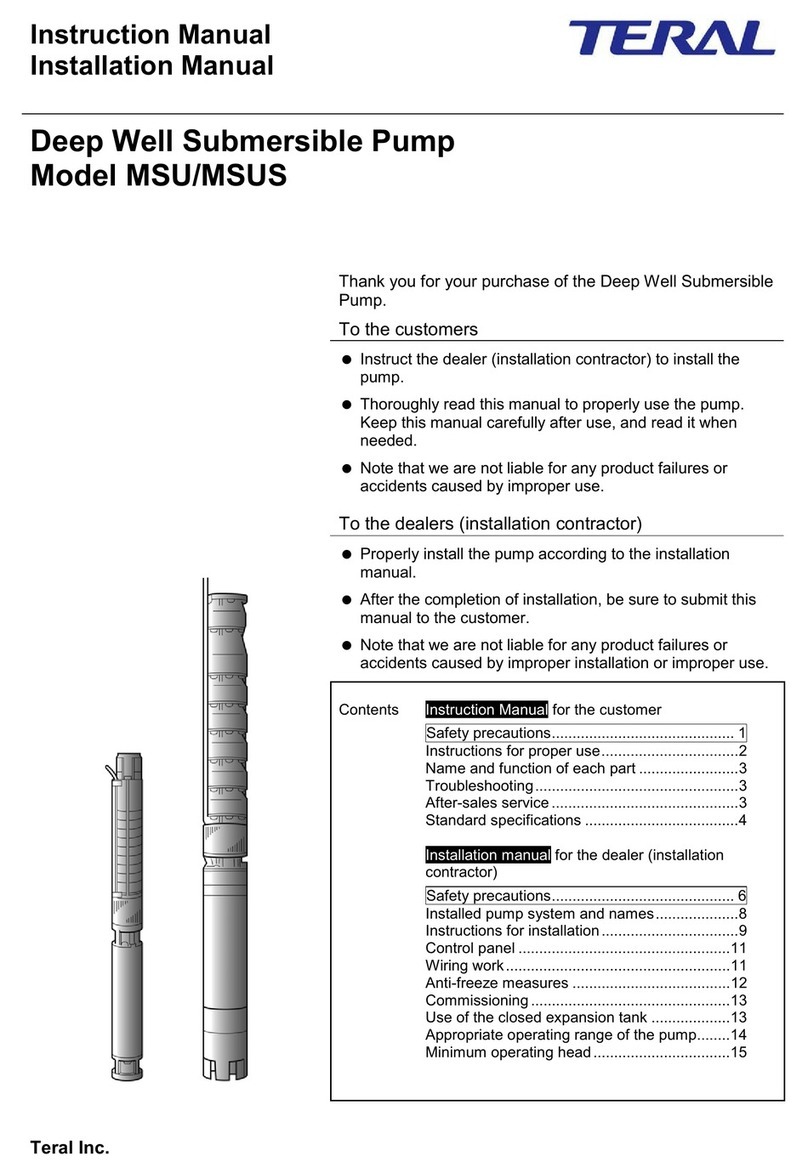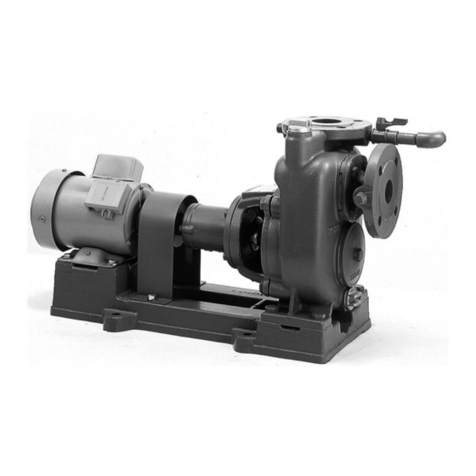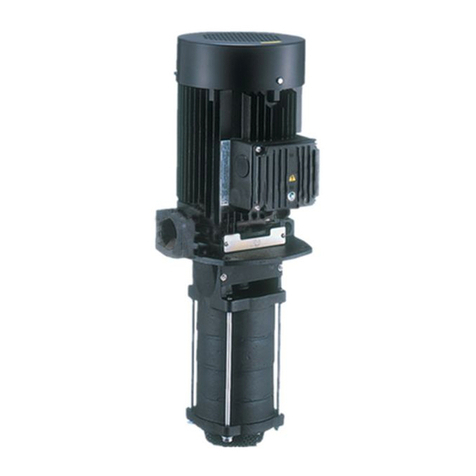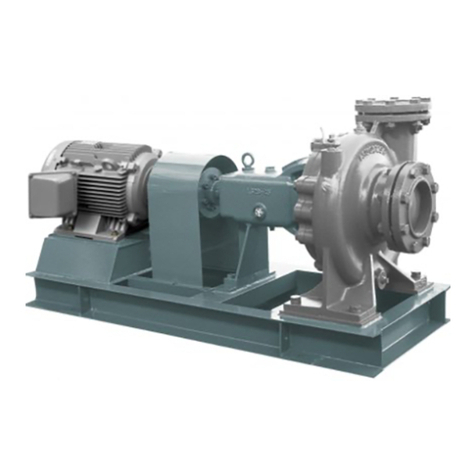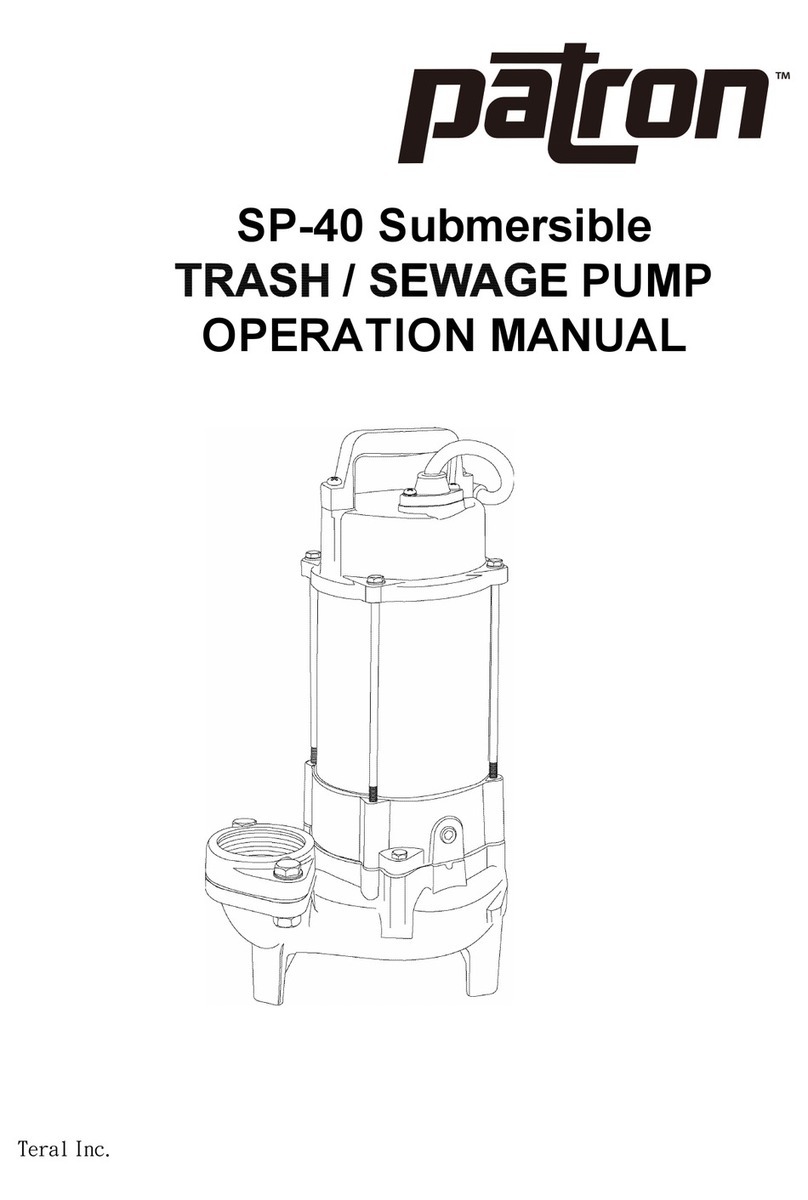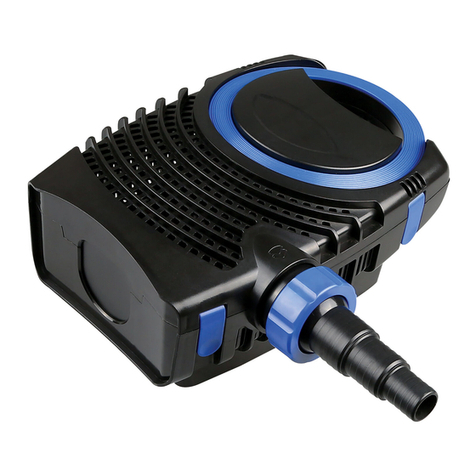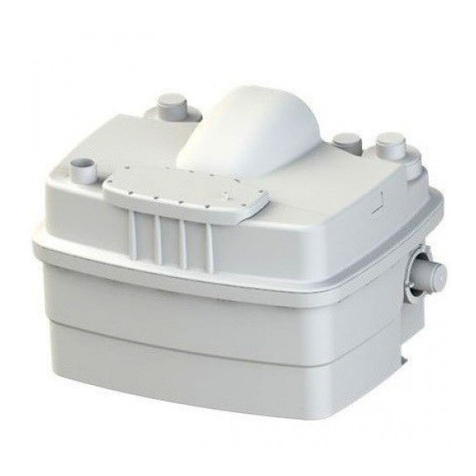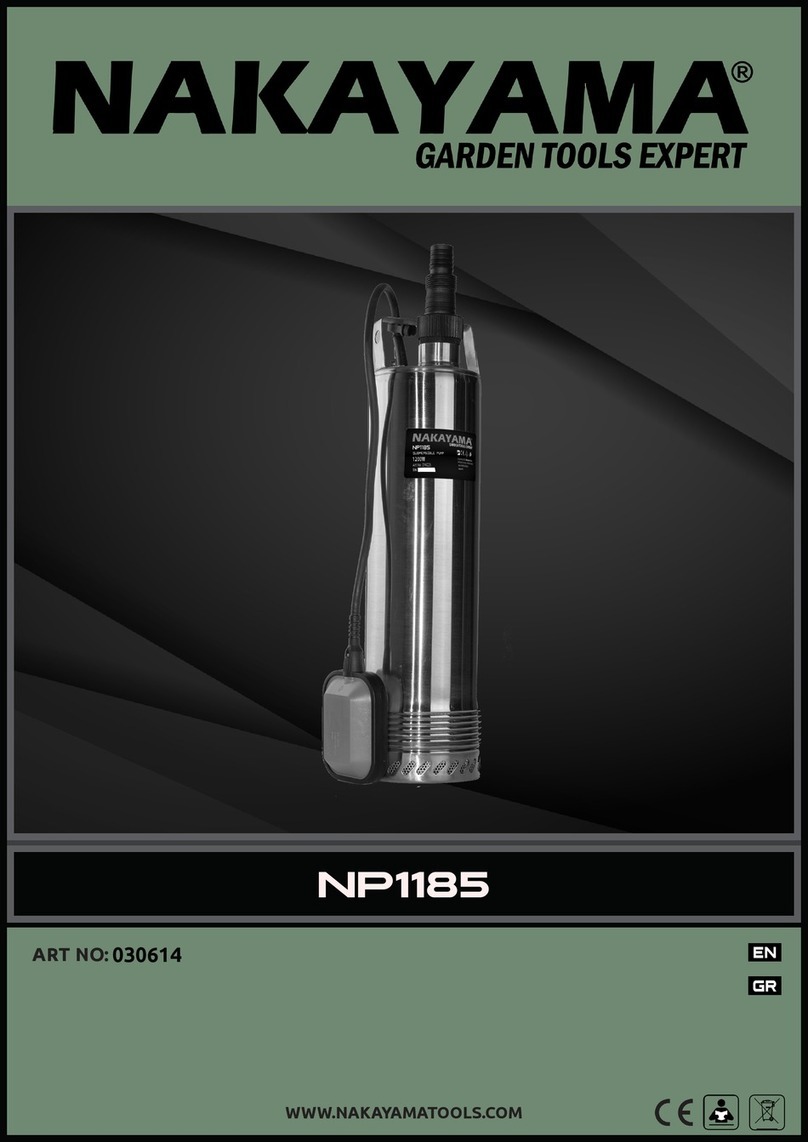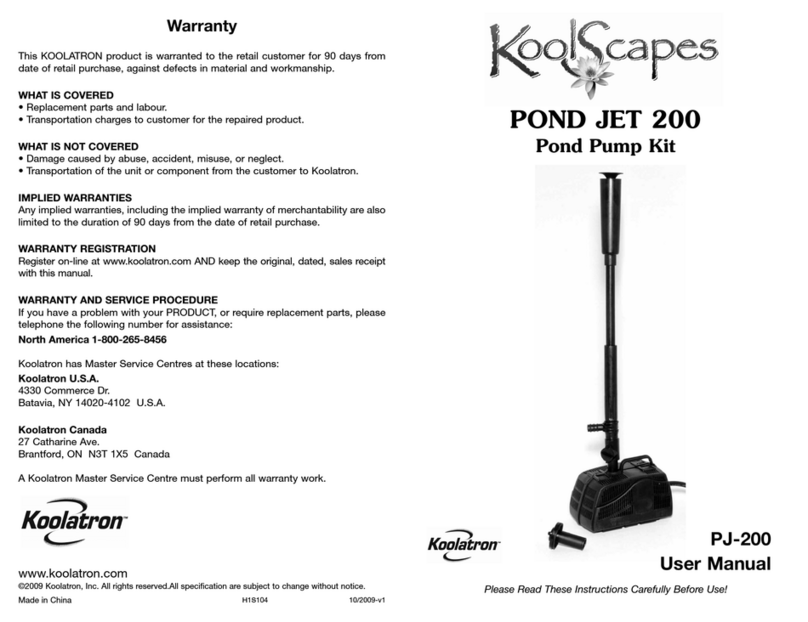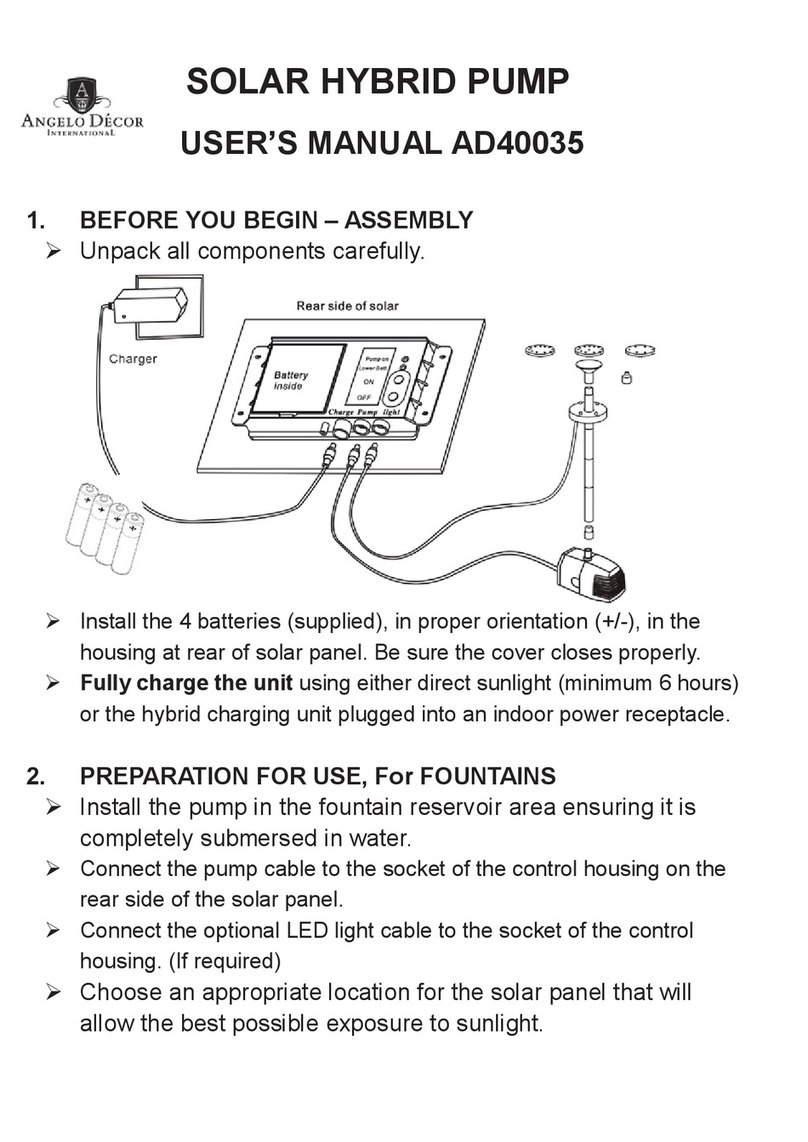
WARNING
switched off.
8.Maintenance
Before starting maintenance work on the pump, the motor, or other parts of the system, make sure that the power supply has been
Ø
The pump does not have a recommended scheduled maintenance schedule.
Ø
If the motor is fitted with grease nipples, then the motor should be lubricated with a high temperature lithium-based grease.
If not, then the motor does not require regular maintenance.
Ø
If the pump and motor are used infrequently with long intervals of non-operation, then we recommend that the motor be
greased.
Ø
Coupling adjustment: Refer to page 11 to 12.
9.Troubleshooting
Fault Probable cause Possible Solution
a. Supply failure or no power supply. Check connections or restart the power supply.
b. Main contacts in motor starter are not making contact or the
motor coils are defective Reconnect or replace contacts or magnetic coil.
c. Pump or auxiliary circuits protection fuses blown. Replace fuses.
d. Pump or piping system may be obstructed causing a jam. Clean the obstruction and restart pump.
e. Motor may have failed. Replace the motor.
f. Motor protector or thermal relay has tripped out. Reset the motor or thermal protector.
Pump does not run
when the motor starter
is activated.
g. Tripping of anti-dry running protection. Check the water level in the tank or the water system
pressure. If everything is in order, check the protection
device and its connection cables.
a. Overload setting is too low. Set the motor starter correctly.
b. The cable connection is loose or faulty. Fasten or replace the cable connection.
c. One fuse is blown. Replace fuse and try starting again.
d. Pump is jammed by an obstruction Check and clean obstruction from system.
e. Contacts in overload are faulty. Replace motor starter contacts.
f. The motor winding is defective. Replace the motor.
Starter overload trips
immediately when the
power is switched on.
g. Low voltage (Especially at peak time). Check the power supply.
a. The voltage is not within the motor’s operating limits. Check the operating conditions of the pump.
b. The control panel is situated in an excessively heated area
or is exposed to direct sunlight.
Protect the control panel from heat sources and from the
sun.
The pump starts
but, after a short time,
the thermal protector
trips out or the fuses
blow. c. A phase in the power supply is missing. Check the power supply.
a. Worn motor bearings causing motor to overheat. Replace motor bearings.
b. The pump’s delivery rate is higher than the specified rate on
the pump nameplate.
Partially close the on-off valve located discharge side until
the delivery rate returns to within the specified limits.
c. There are obstructions inside the pump or pumping system.
Disassemble and clean the pump and piping.
The pump starts up
but, after a
period of time, the
thermal protector trips.
d. Less viscous liquids may cause the motor to work too hard
and overload the motor, causing the motor to overheat.
Check the actual power requirements based on the
characteristics of the liquid being pumped, and replace the
motor accordingly.
a. Pump is not primed with liquid. Fill the pump with the liquid to be pumped.
b. The pump, suction or discharge pipes are blocked by solids
in the liquid being pumped. Clean the pump, suction or discharge pipe.
c. The foot or check valve is blocked or has failed. Replace the foot or check valve.
d. The suction pipe leaks. Repair or replace the suction pipe.
e. The air is in the suction pipe or pump. Remove trapped air from system..
Pump runs but no
water delivered.
f. Motor operating in wrong direction (three-phase motor). Change the direction of rotation of the motor
by reversing motor connections.
a. The pump draws in air or the inlet pressure is too low. Improve the suction conditions.
The pump capacity is
not constant. b. The pump or the suction side of the piping system partly
blocked by foreign bodies.
Clean the pump or suction pipe.
The system's general
protection cuts in. Short circuit. Check electrical system.
a. The foot or the check valve has failed. Check and replace check valve.
The pump rotates in
the wrong direction
when switched off. b. Leakage in the suction pipe. Repair or replace the suction pipe.
















